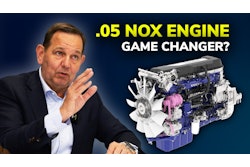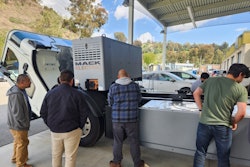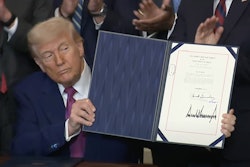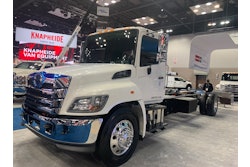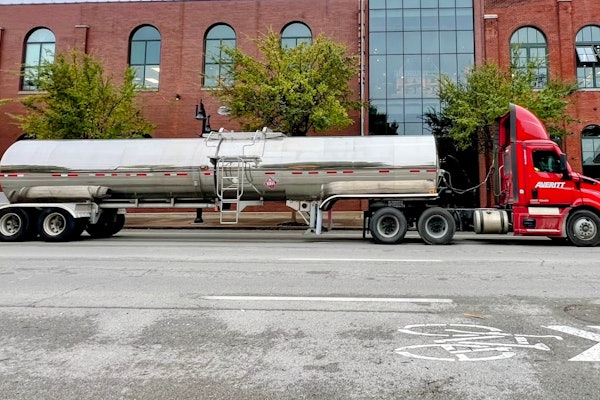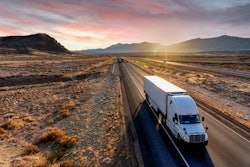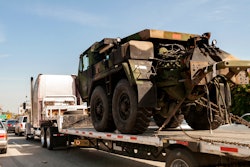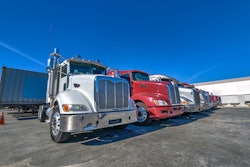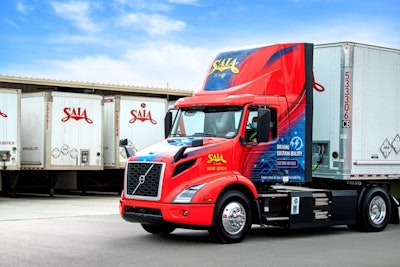
Who doesn’t love underdog stories? What lessons can we learn from epic stories like the Karate Kid, Star Wars, the Marvel Universe, Shane and all the spaghetti westerns? Often the underdog’s ways are misunderstood, like Mr. Miyagi’s “wax on/wax off” training.
While diesel advocates may be doing a victory lap today with changes in emissions regulations and funding, the electric vehicle genie is definitely out of the bottle. As a well quoted OEM executive proclaimed, “The future is electric.”
I just finished a week of site visits involving three fleets running electric semi-trucks in long-haul operations to fill in details for the NACFE Run on Less – Messy Middle story.
One fleet, 4Gen Logistics in Rialto, Calif., has installed 14 350-kW fast chargers and operates more than 45 Volvo VNR electric semis in dual-shift operations often seeing 400 to 600 miles per day. 4Gen also uses charging at its Port of Long Beach facility. The company is committed to being a 100% electric fleet this year with aggressive plans to expand EV assets. They are also effectively using Flipturn charge management software to minimize electricity costs.
Another is a recent start-up, Nevoya, operating a small fleet of Freightliner eCascadias in dual-shift operations supporting the ports of Long Beach and LA, and local major customers in the Inland Empire. They are a 100% electric fleet. Facilitating their entry into the freight business is the impressive Greenlane charging-as-a-service facility in Colton, CA. This facility was purpose built for public charging of trucks with 12 400-kW and 29 240-kW chargers including pull through aisles capable of handling trucks with trailers and aisles for just tractors. The facility has overhead shading, a great lounge area for drivers, and active security measures. While at the Greenlane facility, I saw two Einride BYD electric tractors hauling Amazon Prime loads, two Schneider eCascadias charging bobtail, three Windrose tractors, and a Nevoya eCascadia.
The third site visited was Saia in Stockton, Calif. They have been using two Tesla Semis in long-haul and pick-up-and-delivery route, dual-shift operations. They are the initial vehicles to start the company’s transition to lowering emissions. Saia – CCJ's No. 19 for-hire carrier – is one of the largest freight companies in size in the U.S. with more than 8,000 tractors, servicing the 48 contiguous states from more than 200 terminals.
These three fleets join many others, including small start-ups such as King Fio and established medium-sized companies like Joyride Logistics, and large companies like Schneider and NFI Industries that have begun the EVs at scale movement. Greenlane is joined by other public charging companies like Terawatt, WattEV, Forum Mobility, Tesla and many others that are building out EV truck corridors across the Southwestern U.S.
These companies are visionaries and underdogs. They are Mr. Miyagi/Daniel LaRusso, the Rebel Alliance, the nameless gunfighter. They are Shane.
Don’t like movie analogies? These bleeding edge EV technology adopters are the Suffragettes advocating for women’s right to vote, they are the U.S. and British democracies in the dark days of 1941, they are the Red Sox fans, and the Edmonton Oiler fans.
These trendsetting EV fleets, OEMs and charging service providers are Microsoft in 1975, Apple in 1976, Netflix in 1997, Amazon in 1994, Google in 1998, Tesla in 2003, etc., all with countless naysayers expecting them to fail.
Don’t bet against the underdogs in the long run, especially when there are now so many of them. In time, like Netflix ate Blockbuster’s lunch, EVs will win out over diesel.
All the OEMs recognize the threat EVs are to their existing diesel market share. All OEMs have invested in production EVs knowing they have to have competitive offerings, or they will lose precious sales to their opponents. They know it is just a matter of time before EVs dominate the market.
NACFE is an unbiased source of information on technologies that can improve freight efficiency. Freight efficiency is that measure of net cost per mile. It’s measured in dollars per mile.
Reducing costs per mile heavily depends on the cost of energy. The American Transportation Research Institute and others document regularly the operational cost of trucking. Those costs always fall into three major areas: the cost of the driver, the cost of the equipment, and the cost of fuel.
Fuel costs vary, accounting for between a quarter and a third of operating costs for fleets.
NACFE publishes the Fleet Fuel Study analyzing fleet efficiency trends. The latest report shows diesels have come a long way in efficiency with some of the latest models driven by great drivers able to exceed 11 MPG in long-haul operations. Average MPG across all freight trucks in the fleets NCFE surveyed has improved to 7.77 MPG. Even the DOT estimates MPG across all trucks has increased to an average 6.9 MPG.
NACFE also reported on the success of the DOE SuperTruck II program where five OEM teams developed prototype diesel-based vehicles that achieved 12 MPG to more than 16 MPG. The report shows the extensive technology involved in reaching those high numbers.
All that new diesel progress is great. There are a lot of older diesels on the road and the transition to newer technologies will take years.
Out of the box electric tractors already exceed 18 MPG diesel equivalent. They will only get better. These underdogs have teeth.
Some new OEM startups like Tesla and Windrose have next generation purpose-built EVs heading to production. The traditional OEMs like Kenworth, Peterbilt and Volvo have already introduced second generation EVs with better performance.
The lessons of the underdog should be well understood by a society conditioned to cheer for underdogs. Those smart fleets making that bleeding edge of technology transition are the stuff of fame. They are the Karate Kid.
The days of the diesel empire are numbered. The EV ship is sailing. There will be rough seas ahead for it, and the journey will take years, but trust that EVs will make their destination.
As Patty Poppe of PG&E stated on the main stage at the close of ACT EXPO 2025, “Someone has to have the tenacity to build the future.”




